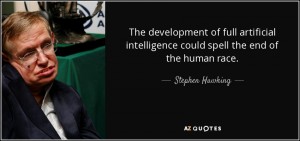It’s one thing if your valuable employees leave you for another job or for retirement. That one thing is that you really had no control over the event. The decision and probably the date was the employee’s decision and your company had little control over the timing or the circumstances.
It is quite another thing when you plan your employees’ departure through downsizing, mergers and acquisitions, buyouts, cost-cutting, or some other self-imposed staff reduction. That other thing puts you in a position that gives you some control over timing and circumstances. When it is your decision, you can give yourself time to ensure an orderly off-boarding or separation that includes preserving your valuable knowledge assets.
If you are in a position to control your employees’ separation, take the opportunity to put organization-wide knowledge transfer plans in place. The day of the exit interview is not the time to find out what you need to know from them for business continuity.
When you are organizing a mass layoff or initiating any other planned employee departure:
- Create a list of mission-critical employees and dates of separation.
- Determine what they know as far in advance as possible – at least 3 to 6 months before their departure – so you aren’t blindsided by having them take two months of accrued vacation before their official departure date.
- Have a standardized plan and best practice for working with departing employees that includes collection methods, who is responsible for working with them, what assets you need based on their role, how and where the knowledge will be stored, and how it will be transferred and used by others.
- Ask departing employees to review and sign off on the knowledge.
Just because your organization is in a position to put a knowledge transfer plan into place does not necessarily mean that it will. Often, it is an individual employee who feels a sense of obligation to the company and sees the need for knowledge collection and transfer that may institute their own knowledge management plan.
Two Stories
Here are two stories that came to me recently of employees who took personal responsibility for knowledge management in their divisions.
Story One
One woman who read my book Finding Your SMEs: Capturing Knowledge from Retiring Workers Before They Leave several months ago said she told her brother about it who had just retired from a division of a global food manufacturer and distributor. He told her that he had seen the problem first hand. Before he retired last year, he took it upon himself to survey the knowledge within his division, collect and preserve it. He came up with his own plan to make sure he left his employer with the critical knowledge they would need to find after he was gone.
Story Two
I just spoke with another woman last week who said she oversees the knowledge management plan for a division of the federal government. She’s been traversing the country working her multi-year plan to capture what the unit will need long-term. Her plan and practices are confined to her division and we talked about the potential of standardizing her methods to other divisions.
“I started out in reactive mode,” she said. Now she describes her knowledge management plan as “an ecosystem. I’m always tweaking it.”
Her plan is all the more important now as the federal government is looking to reduce the workforce by 15 to 18 percent in the next year through attrition and buyouts. She said her 25 years with the department makes her eligible for a buyout, but she wants to stick around and finish the job she has started. She expects to stay with the division about five more years to put something solid in place.
“I am trying to leave a legacy to help the agency after I’m 10 feet under,” she said.
Wow.
Good as Gold
When you have employees who are looking out for your business continuity, those people can be the lifeblood of your business tomorrow.
If you don’t have a standard approach to knowledge management, support the efforts of those people who are looking out for you and doing the hard work of putting your knowledge management plan in place. Consider adopting and adapting their best practices to the rest of your organization.
These people are good as gold. Mine them.







